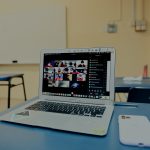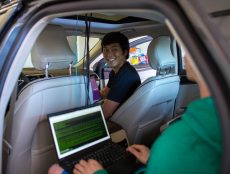
The global eLearning industry has exploded in size within the past decade, and COVID-19 has only further accelerated the number of people that are now using eLearning solutions for their online education needs. The industry allows millions of students from around the globe to connect with other learners and tutors. The market is highly competitive, which means quality is imperative in eLearning products. The eLearning testing scope extends beyond traditional test suites for software to include ‘learnability.’ If your product is insufficiently ‘learnable,’ it risks falling behind and getting swallowed up by the competition.
Quality Assurance in eLearning
The eLearning testing process goes beyond the traditional quality assurance (QA) testing process. Unit tests, API tests, integration tests, functional tests, and more are all still a requirement in the eLearning testing process, but there is a much greater emphasis on the content contained within than in most other software products.
QA throughout the student learning experience must ensure that the software does not get in the way of students or teachers. User story testing and end to end (E2E) testing approaches are very important in eLearning QA. Students are very mission-oriented, so a large part of QA in eLearning is developing user stories that can be followed and tested in order to maximize learnability.
Key Elements of eLearning Development
eLearning development requires an explicit focus on objectives that are less typical of most other software. The end-user experience is crucial, not just in terms of a student’s use of the software, but also in assessing that the course content is ‘learnable’. This means that a student is able to achieve clearly defined goals when they complete a course. Due to this requirement, particular thought must be placed into several key elements of eLearning development.

UI/UX and course design are very important for eLearning development. Content should be very easy to navigate, and interactive elements must be easy to use and intuitive. Since user engagement is a large part of eLearning platforms, interactivity is a vital part of the user experience and must work well with the course design.
Course design and content need to be considered when developing and testing eLearning software. Content has to be highly ‘learnable’ – students must be able to easily navigate content, interactive elements must be intuitive, and the platform must absolutely not get in the way of the learning experience. A well-developed software platform that fails learnability testing will not succeed in a competitive market.
The Role of QA in eLearning Development
QA in eLearning development is far more tightly involved in not just the correctness of the software but also in terms of how content is delivered and how users experience and interact with the software. The role of eLearning software is to facilitate learning, so an important objective in the eLearning testing process is that the software does not impact learnability. This is generally considered to be a mix of functionality, usability, and accessibility.
The focus of QA is very much on the end-user – typically the student. User stories, UI/UX testing, and E2E testing are very much at the forefront of the eLearning testing focus. This is because negative experiences in these areas are likely to adversely impact student learning, which can quickly kill an otherwise promising product. Ensuring the end-user experience is smooth and easy-to-use is of the utmost importance.
Defects will have a critically detrimental effect on the long-term prospects of an eLearning application. For many eLearning platforms, return customers provide a consistent revenue stream. Students who feel like they are getting a good return on investment may pick up additional courses that they feel are worthwhile, whereas students who experience issues with an eLearning application may choose to look elsewhere for future purchases.
What It Takes to Ensure Quality
A rigorous testing process is an absolute must to ensure quality when developing eLearning software. This should include not only an extensive test suite for the codebase but also an extensive range of E2E testing procedures. All elements of an application, from usability to functionality and performance, need to be tested.
Particular issues to pay attention to in eLearning include localization, internationalization, and accessibility. eLearning applications have a significant advantage over in-person educational tools because they can be accessed by anyone across the globe, so it is crucial that this is accounted for during eLearning development and testing.
For example, a private English tutor working in the United Kingdom may connect with students living in China. These interactions need to not only work smoothly for both parties, but the eLearning application must be properly localized for each. This means displaying content in the correct language, accounting for timezones, using the correct formats for things such as dates, time, money, and plenty more. There are many different possible combinations of cultural differences, which must all be accounted for during testing. This is why a rigorous testing procedure that follows best practices is so crucial to the eLearning QA process.
QA Testing Best Practices
Extensive E2E testing is a necessity in eLearning application testing. The scope of the eLearning testing process goes beyond ensuring sufficient code coverage and standards of adequacy for many other software projects.
Courses must be optimized for learnability. This should include developing and utilizing an eLearning QA checklist to help ensure quality and consistency throughout the courses. Consistency within the content is important, as is attention to detail. This checklist should consider not just the usability of the software but also the functionality with a mission-oriented approach. For example, is the content easily accessible to students on different devices? Does the material align with the stated learning objectives? Do students receive adequate feedback as part of the learning experience?
Extensive user acceptance testing should form a key part of the eLearning QA process. Stress and performance testing should also be performed to ensure that the user experience is not tarnished by having too many students overloading the software, network, or database. This could include group video sessions with students from many different locations around the world connecting simultaneously. An adequate individual user experience will be negatively impacted if an eLearning application cannot handle multiple simultaneous student connections.
Testing the codebase is no less important in eLearning applications than in other software products. Due to the extensive eLearning QA process, applying automation testing to the codebase is a must. Projects have limited budgets, so freeing up testers to work on E2E testing rather than spending time writing unit tests and creating test cases is imperative.
Cross-platform testing is also an essential part of the eLearning QA process. Students and teachers are likely to connect from many different types of environments – from desktop PCs in classrooms to using smartphones while on the go. Not only should everything display and function correctly at all different screen resolutions, but low-bandwidth and offline modes must also receive attention, as many learners around the world connect through smartphones using data plans rather than fixed connections.
eLearning development and testing is highly user-focused. It is essential that an eLearning application does not cause friction between the student and the content. This friction can come in many forms, from poor performance on mobile devices to buggy UI elements or unclear lesson content. Each of these aspects and more needs to be considered as part of the eLearning QA process.
 Erik Fogg is the co-founder and COO of Prodperfect, a quality assurance provider.
Erik Fogg is the co-founder and COO of Prodperfect, a quality assurance provider.
Featured Image: Raquel Martinez, Unsplash.









3 Comments